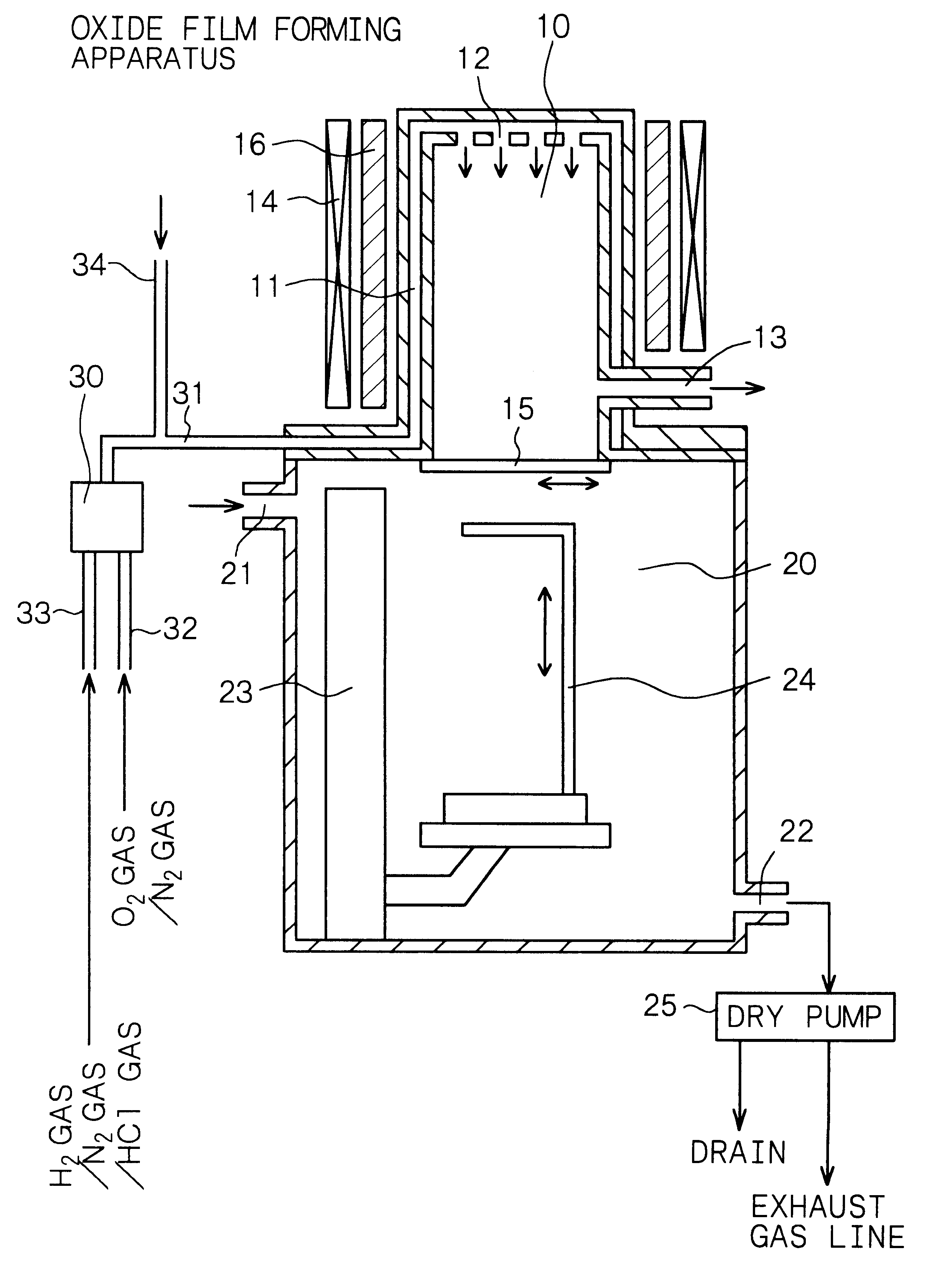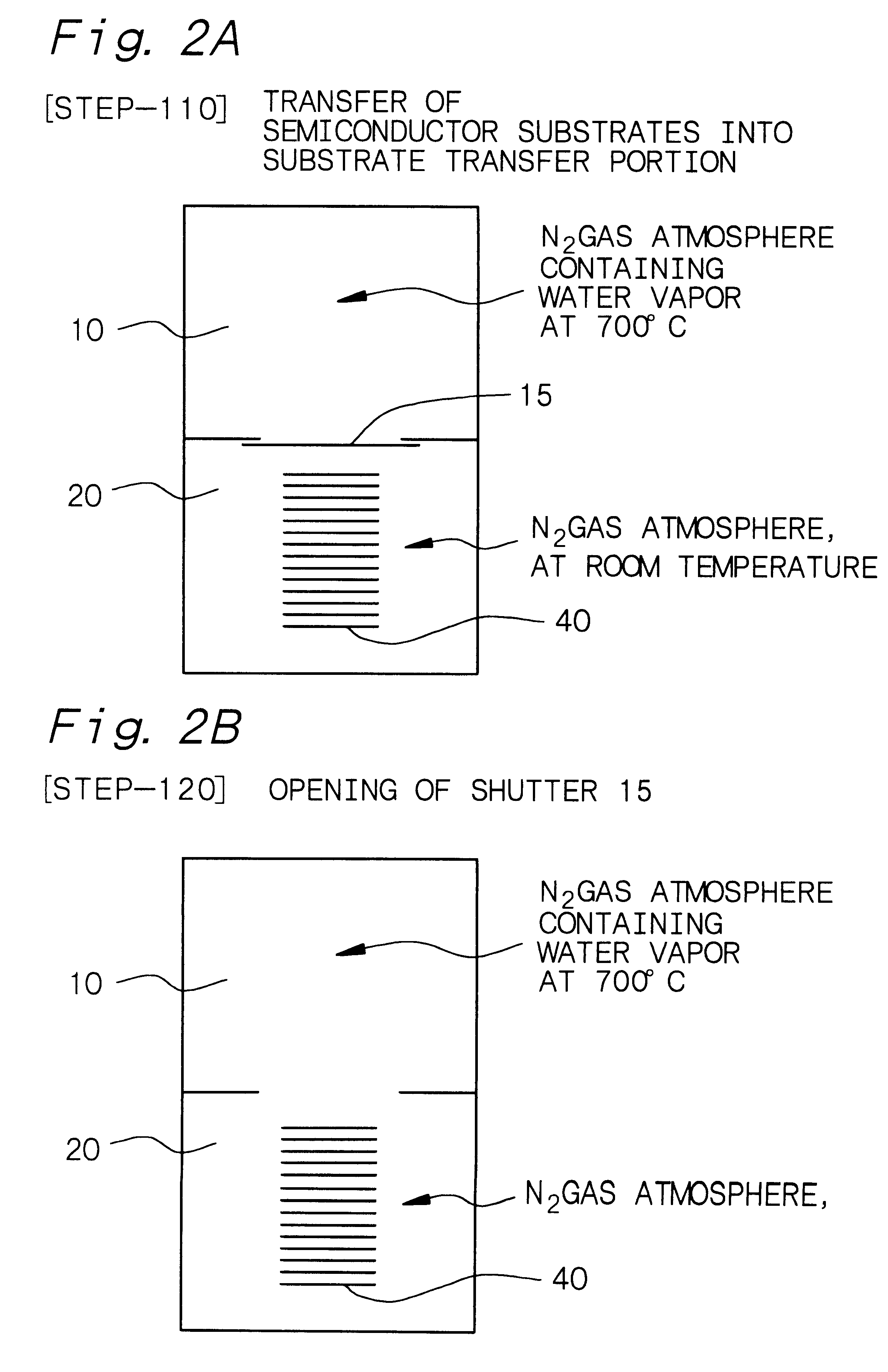Method of forming oxide film
a technology of oxide film and wet oxidation method, which is applied in the manufacturing of basic electric elements, semiconductor/solid-state devices, electric devices, etc., can solve the problems of reducing the electric characteristics and reliability of semiconductor devices, the thickness of silicon oxide film is not uniform, and the content of residual cleaning solution is not uniform, so as to prevent the surface roughening of semiconductor layers
- Summary
- Abstract
- Description
- Claims
- Application Information
AI Technical Summary
Benefits of technology
Problems solved by technology
Method used
Image
Examples
example 2
FIG. 5 shows a conceptual view of a horizontal type oxide film forming apparatus for forming an oxide film according to a pyrogenic oxidation method. The oxide film forming apparatus has a process chamber 50 and a resistance heater which is heating means 51 for heating a semiconductor layer. The process chamber 50 is made of a quartz furnace core tube and is for receiving a semiconductor layer (specifically, a silicon semiconductor substrate 40) therein for forming an oxide film on the semiconductor layer. The resistance heater as heating means 51 is disposed outside the process chamber 50 and is disposed nearly in parallel with the surface of the semiconductor layer. The semiconductor layer (for example, a silicon semiconductor substrate 40) is placed on a wafer stage 52. It is transferred into and out of the process chamber 50 through a gate valve 53 which is the partitioning means disposed on one end of the process chamber 50. The oxide film forming apparatus has a gas inlet port...
PUM
 Login to View More
Login to View More Abstract
Description
Claims
Application Information
 Login to View More
Login to View More - R&D
- Intellectual Property
- Life Sciences
- Materials
- Tech Scout
- Unparalleled Data Quality
- Higher Quality Content
- 60% Fewer Hallucinations
Browse by: Latest US Patents, China's latest patents, Technical Efficacy Thesaurus, Application Domain, Technology Topic, Popular Technical Reports.
© 2025 PatSnap. All rights reserved.Legal|Privacy policy|Modern Slavery Act Transparency Statement|Sitemap|About US| Contact US: help@patsnap.com



